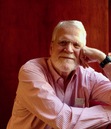Mark Scott Smith's Blog: Enemy in the Mirror, page 73
December 6, 2018
Drunken Angel
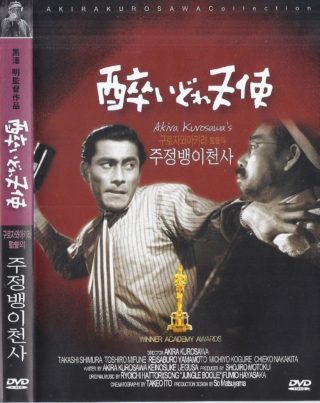
The 1948 Japanese film Drunken Angel (醉いどれ天使), about and alcoholic physician and his yakuza patient, was the first collaboration between the director Akira Kurosawa and actor Toshiro Mifune.
Released during the American occupation in Japan, the screenplay was supposed to comply with a U.S. censorship board that did not allow criticism of the occupation to be shown. Nevertheless, Kurosawa slipped several negative references regarding the occupation into the film.
The post Drunken Angel appeared first on Enemy in the Mirror.
December 3, 2018
UN Mediator Assassinated
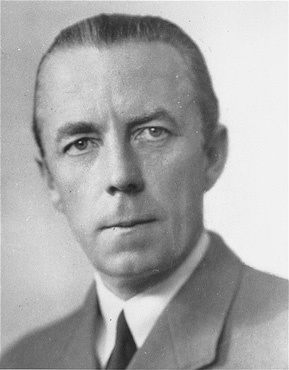
In September 1948 members of the Lehi militant organization (AKA the Stern gang) assassinated the Swedish UN mediator Count Folke Bernadotte in Palestine — presumably for proposing an Arab administration for Jerusalem.
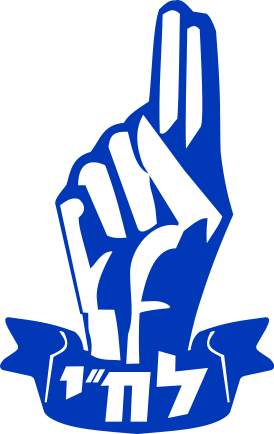
The Lehi (Hebrew for “Fighters for the Freedom of Israel”) was a Zionist paramilitary group founded by Avraham (“Yair”) Stern (1907-1942 ) with the goals of:
forcing British authorities from Palestine
allowing unrestricted immigration of Jews
formation of a new totalitarian Hebrew republic.
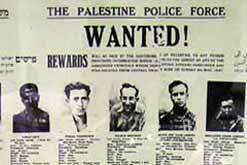
BBC.uk
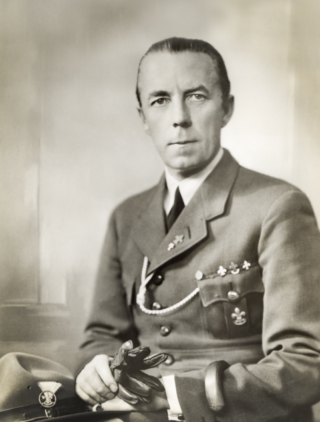
Count Folke Bernadotte (photo added by Ron Moody)
“Sitting in the back seat, the blue-blooded Swedish aristocrat and the decorated French hero of two world wars had begun to relax from the tension of the journey as the big Chrysler, the last of a three-car convoy, started its final ascent up the narrow road through the now Jewish-occupied district of Katamon, towards Rehavia and the house of the Jerusalem military governor. No one in the first car, a DeSoto, least of all the Israeli captain assigned to escort the VIPs, showed much concern when a new-looking Israeli army jeep slewed across the road to bring the convoy to a halt: just another temporary checkpoint. As three soldiers in standard Israel Defence Forces khaki shorts, fingers on triggers, approached the DeSoto; the three young Swedes and a Belgian in the passenger seats, groped for their papers. “It’s OK boys,” the Israeli officer explained. “Let us pass. It’s the UN mediator.”
At that moment, one of the three men ran to the Chrysler, pushed the barrel of his German-made Schmeisser MP40 sub-machine gun through the open rear window, and pumped six bullets into the chest, throat and left arm of the aristocrat and another 18 into the body of the French colonel sitting on his left…”
-From the Independent
The post UN Mediator Assassinated appeared first on Enemy in the Mirror.
November 29, 2018
America Reinstitutes Military Draft
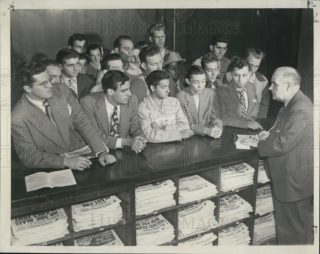
Although a great proponent of demobilization after WWII, President Harry S. Truman re-instituted the military draft in July 1948 with a proclamation calling for conscription of ~10 million men.
> 16 million men and women served in the U.S. military during WWII. When the war ended, many American citizens (just as after WWI) demanded rapid demobilization. By 1948, less than 550,000 men remained in the U.S. Army.
With the Cold War heating up, and a confrontation with the USSR entirely possible, U.S. government officials were concerned about the relatively small size of American military forces.
The Draft | PBS America
The post America Reinstitutes Military Draft appeared first on Enemy in the Mirror.
November 26, 2018
General Elections in Korea
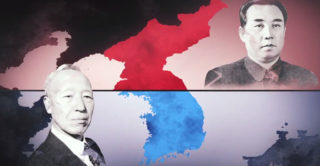
In May 1948 the United Nations Temporary Commission on Korea (UNTCOK) arrived in Seoul to set up supervised Korean elections, after which the country would become independent of U.S. and Soviet control. Rejecting U.N. supervision of elections, Northern Korea blocked UNTCOK from entering its part of the country and refused to participate in the UN-sanctioned election.
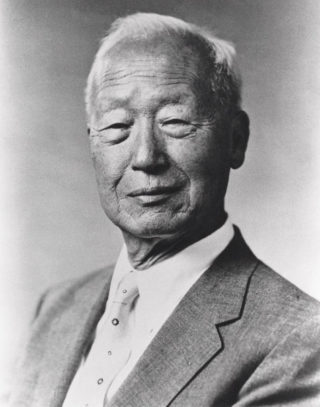
Syngman Rhee (Wikipedia)
Korean independence leader Syngman Rhee (a staunch anti-Communist promoted by the U.S.) urged proceeding with the elections without the northern vote. Many southern Koreans who felt a unilateral election would doom any possibility of reunification of the country, strongly objected. Several prominent southern leaders went north to negotiate a settlement with the northern Koreans, but were unsuccessful.
In May 1948 the Republic of Korea’s first Korean National Assembly was elected. After Syngman Rhee was inaugurated president of the Republic of Korea in August, he began an immediate crack down on opposition within South Korea. Many political arrests were made, and freedom of the press was restricted.
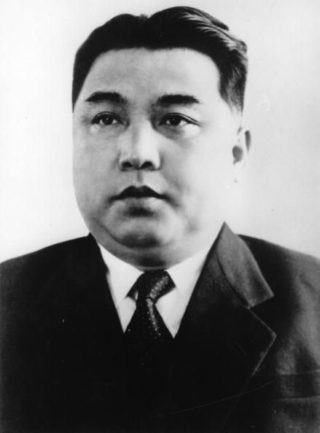
Kim Il-sung (Wikipedia)
In September 1948, after elections were held in the north, the Democratic People’s Republic of Korea (DPRK) was created and the popular guerrilla leader Kim Il Sung was elected premier. Claiming he had received the majority of popular vote in (underground) elections in the south as well the north, Kim Il Sung insisted he was the legitimate leader of all Korea.
Like Syngman Rhee in the South, Kim Il Sung suppressed political opposition in the North. By 1949, Kim began promoting an intense personality cult. The first of many statues of him appeared, and he began calling himself “Great Leader.”
Here’s the American view of Korean independence.
Here is an alternative (Russian) view of the 1948 Korean elections.
The post General Elections in Korea appeared first on Enemy in the Mirror.
November 22, 2018
London Olympic Games
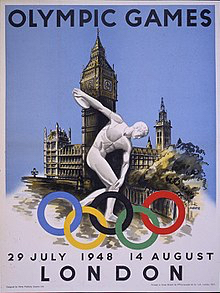
The 1948 Games of the XIV Olympiad were the first Summer Olympics held since the 1936 Games in Berlin.
The 1940 Olympic Games, originally scheduled for Tokyo, then Helsinki, were canceled with the outbreak of World War II. The 1944 Olympic Games, provisionally planned for London, were also canceled during the war.
London had hosted the Olympic Games previously in 1908.
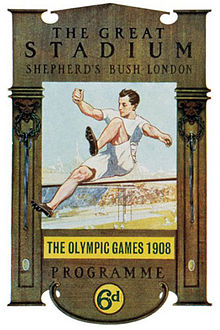
Wikipedia
With rationing still in effect after WWII, no new facilities were built for the 1948 Olympic games. 59 nations were represented in 19 sports. Germany and Japan were not invited to participate. The Soviet Union was invited but chose not to send any athletes.
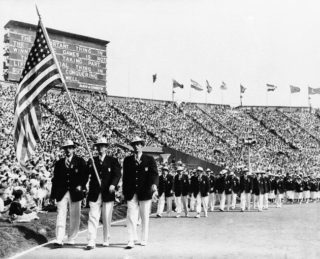
The United States team won the most total and gold medals.
The post London Olympic Games appeared first on Enemy in the Mirror.
November 19, 2018
U.S. Armed Forces Desegregated
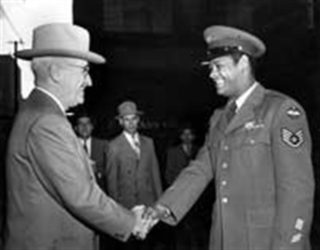
During WWII, the U.S. Army had become the nation’s largest minority employer. More than one million of 2.5 million African-American males were inducted into the armed forces by 1945. African Americans, ~11% of all registrants liable for military service, furnished approximately the same proportion of inductees in all branches of the service except the Marine Corps.
In June 1941, President Roosevelt, in response to complaints about discrimination at home, issued Executive Order 8802 that directed blacks be accepted into job-training programs in defense plants, forbade discrimination by defense contractors, and established a Fair Employment Practices Committee (FEPC).
In 1946, when Congress terminated the FEPC, President HarryTruman appointed the President’s Committee on Civil Rights. Included in the commission’s 1947 report, were anti-lynching and anti-poll tax laws, a permanent FEPC and strengthening the civil rights division of the Department of Justice.
In February 1948, when President Truman called on Congress to enact all of these recommendations, and southern Senators threatened a filibuster, Truman moved ahead with executive orders. Truman’s orders bolstered the civil rights division, appointed the first African-American to the Federal bench and named several African-Americans to high-ranking administration positions.
On July 26, 1948, Truman issued executive order 9981 that ordered full integration of all armed forces.
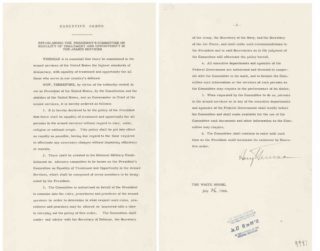
The post U.S. Armed Forces Desegregated appeared first on Enemy in the Mirror.
November 15, 2018
Post-WWII Life is Good
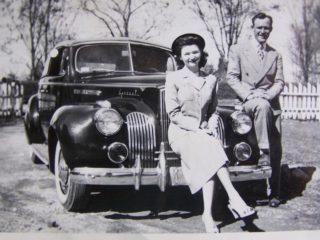
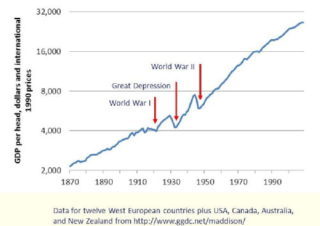
In 1948 post-WWII prosperity was rising for most Americans.
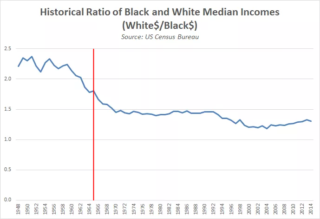
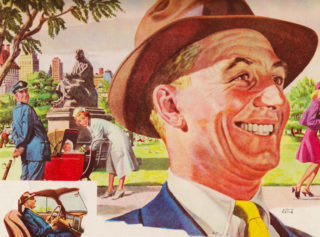
Inquiries Journal
Consumerism was on the march.
While cartoon humor often had a violent edge to it.
And the Babe died.
The post Post-WWII Life is Good appeared first on Enemy in the Mirror.
November 11, 2018
Armistice Day
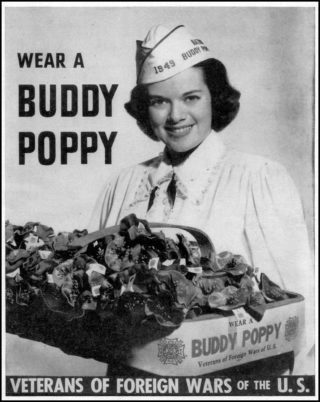 November 11, 1918: World War I Ends
November 11, 1918: World War I Ends
Veterans Day is an official American holiday that originated after WWI as Armistice Day and was originally intended as a remembrance of November 11, 1918 when major hostilities of World War I formally ended at the 11th hour of the 11th day of the 11th month of the year 1918. Commonwealth nations refer to it as Remembrance Day.
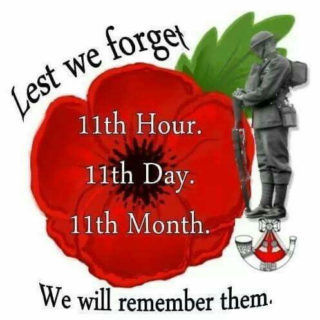
Here are some interesting pictures from November 11, 1918.
At the urging of major veteran organizations, Armistice Day was renamed Veterans Day in 1954.
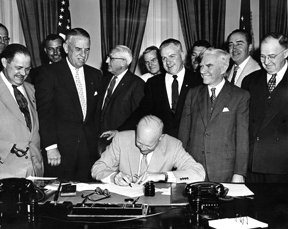
President Dwight D. Eisenhower signing HR7786, June 1, 1954, changing Armistice Day to Veterans Day. (U.S Veterans Ad\ministration)
This grainy, vertiginous clip provides a dreamlike remembrance of the day in 1948.
The post Armistice Day appeared first on Enemy in the Mirror.
November 8, 2018
Berlin Airlift
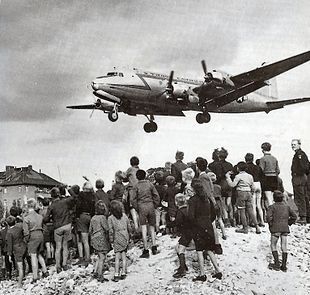
In June 1948, in response to Allied currency change in West Berlin, the Soviet Union closed vehicular and railroad entry routes through East Germany into the Western sectors of Berlin.
The Western allies responded with daily flights to transport goods to West Berliners. The Berlin airlift lasted until May 1949 when the Soviets lifted the blockade.
The post Berlin Airlift appeared first on Enemy in the Mirror.
November 5, 2018
Polaroid Land Camera

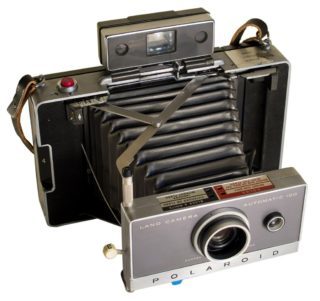 Land Cameras, instant cameras with self-developing film named after their inventor Edwin Land, were manufactured by Polaroid from 1947 to 1983.
Land Cameras, instant cameras with self-developing film named after their inventor Edwin Land, were manufactured by Polaroid from 1947 to 1983.
Instant cameras have made quite a comeback these days.
The post Polaroid Land Camera appeared first on Enemy in the Mirror.
Enemy in the Mirror
I began by posting events around the turn This website www.enemyinmirror.com explores the consciousness, diplomacy, emotion, prejudice and psychology of 20th Century America and her enemies in wartime.
I began by posting events around the turn of the 20th century as I was researching my first novel about the Pacific War. I continued through WWII for my second novel about the Battle of the Atlantic. Now I am beginning to look at the Cold War as I gather information for my next novel about the Korean War. ...more
- Mark Scott Smith's profile
- 7 followers


